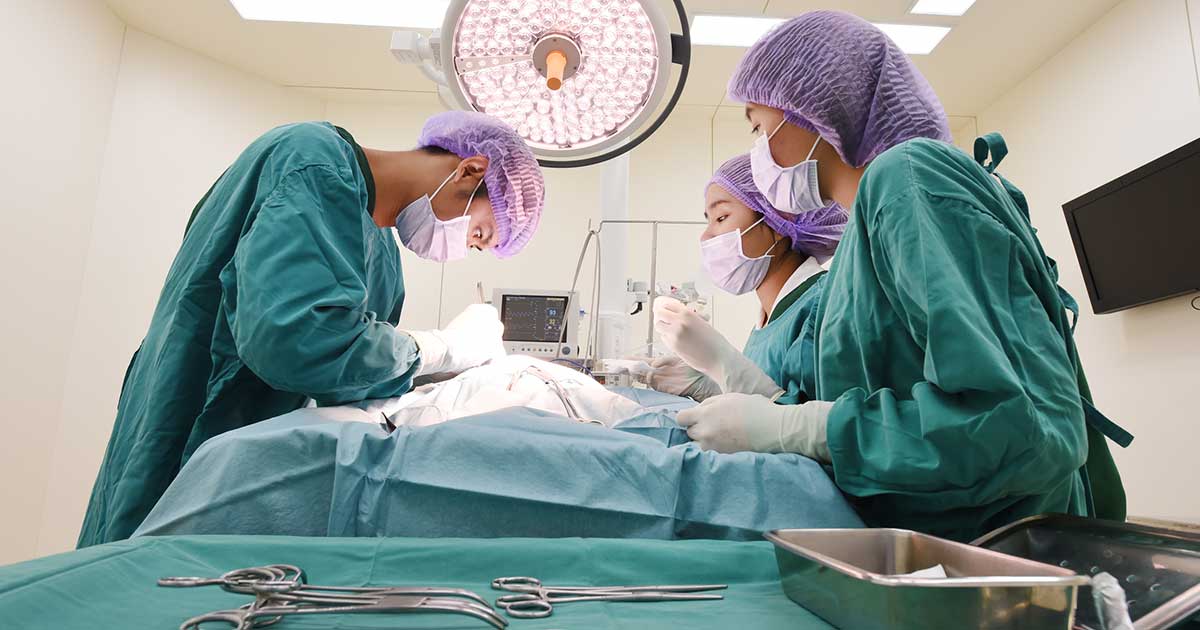Signs And Symptoms Of Appendicitis; What You Should Know
Appendicitis is a painful condition requiring immediate attention. The appendix is located in the lower right region of the abdomen, and a sharp pain in the area often indicates the first sign of trouble. The tube-shaped organ is part of the digestive tract, and if it gets infected by an overgrowth of bacteria, it will become inflamed and burst if left untreated. A number of symptoms present themselves and help to diagnose appendicitis.
Role Of The Appendix

Although the appendix plays an important function in the human body, its existence and origin are not fully understood. Its name translates to a worm-like appendage and is essentially a pouch-like sac of tissue. It contains trapped bacteria, and when a blockage of mucus or stool blocks the opening of the appendix to the cecum, the bacteria has nowhere to go and starts to infect the area.
Upset Stomach

Stomach problems can occur as the appendix is inflamed and infected. Nausea and vomiting are common symptoms. This feeling of malaise may contribute to loss of appetite. It is important to stay hydrated, and nutrients can be replenished with easy-to-swallow foods like broth, smoothies, or sports drinks. Other digestive problems like constipation or diarrhea may also occur, and there are medical and natural solutions for both conditions.
Mild Fever

Along with a painful abdomen, a fever might be present in someone suffering appendicitis. Usually fairly mild, the temperature range is about 99 degrees Fahrenheit (37.2 Celsius) to 100.5 degrees Fahrenheit (38 Celsius). If the appendix bursts, the fever may rise to more than 101 degrees Fahrenheit (38.3 Celsius) as the body fights back against the infection. To ease a fever, it helps to place a cold cloth on the forehead of sit in a lukewarm bath.
Abdominal Pain

The most predominant symptom of appendicitis is abdomen pain. Rather than a sharp, instant, and gut-wrenching pain, the discomfort will start gradually with cramps or a dull aching sensation. It might start near the belly button and move rightwards and toward the appendix itself. The pain increases when the appendix starts getting inflamed and grows in size, causing irritation to the surrounding abdominal wall, called the peritoneum.
Nausea And Vomiting

The nauseousness and vomiting associated with appendicitis will appear soon after the initial abdominal pain begins. Dr. Jennifer Caudle of the Rowan School of Osteopathic Medicine claims that inflammation of the gastrointestinal tract and the nervous system can lead to nausea and vomiting. This symptom is not experienced by every individual who suffers appendicitis, but if there is a constant stomach pain as well as nauseousness or vomiting for more than twelve hours, see a medical professional as soon as possible. Children aged two and under will usually vomit if they have appendicitis and teenagers will experience the nauseousness and vomiting as well. Avoid any over-the-counter medications if these symptoms are present and meet with a health professional who can diagnose appendicitis correctly.
Bloating And The Inability To Pass Gas

Large meals cause bloating in many individuals, but if this bloating feeling continues and is coupled with some of the other symptoms mentioned, seek advice from a health professional. Feeling bloated for more than twelve hours is not considered normal, and the bloating associated with appendicitis can last for a few days. The tell-tale signs of appendicitis-related gas issues are either a significant amount of gas passing or the complete inability for the body to do so at all. Both of these complications are accompanied by pain in the lower abdomen. Do not consume antacids or laxatives if these symptoms are present as they may cause the inflamed appendix to burst. Although the ability to pass gas is often compromised with appendicitis, many individuals with the condition also report a substantial increase in urination.
Constipation Or Diarrhea

An individual suffering from appendicitis may feel the urge to go to the bathroom but cannot produce any stool. Constipation is one of the most commonly experienced symptoms with over half of patients experiencing this specific symptom. Constipation is painful, and this pain may also feel as though it could be relieved with the passing of gas or defecation. Appendicitis can obstruct the gastrointestinal tract which leads to this issue. In contrast, some will experience diarrhea with appendicitis, and if either of these symptoms is present with other symptoms, then a trip to the doctor should be made as soon as possible. A quick blood or urine test will determine if appendicitis is affecting the body.
Chills And Loss Of Appetite

Cold chills are an uncomfortable sensation, often associated with fever. The body responds to the infection of the appendix by releasing several chemicals that bring cells to the area that can create cold chills in the body coupled with fever. Cold chills can come and go, lasting from a few minutes to a few hours and also causing shaking or shivering. Drinking plenty of fluids and taking medication associated with decreasing the effects of fever are highly recommended. Appendicitis can also obstruct the gastrointestinal tract which can lead to a loss of appetite in many experiencing the condition. Around seventy-five percent of people with the condition will incur this symptom. The loss of appetite could be coupled with the nauseousness that is common among appendicitis patients.
Confusion And Disorientation

Confusion or disorientation can mean that the infection of the appendix is progressively getting worse. The infection may have even entered the bloodstream at this point, which can be fatal. If an infection gets worse inside a human body, more resources are devoted to fighting the disease which can negatively affect the brain and cognitive functioning. Many medical conditions such as appendicitis can alter an individual's mental state which can lead to various problems. Children may seem withdrawn, and the elderly may seem very confused if they are affected by an appendix infection that is worsening. Appendicitis may also lead to an uncomfortable dizziness coupled with confusion; this mental disturbance is often the body signaling that something is wrong internally as the resources used to power the brain are being diverted elsewhere.
Complications

If these symptoms are ignored, and diagnosis is made too late, complications can arise. Damage to the inside of the abdomen can happen if the infection spreads. Complications would happen upon perforation and the subsequent release of pus to the abdomen lining and pelvic region. It is important not to delay diagnosis, treatment, and surgery to avoid perforation, which has a fifteen percent likelihood of happening thirty-six hours after first symptoms of appendicitis show up.
Risk Factors

Although prevention is nearly impossible, there are steps to take to reduce the risk of acquiring appendicitis. The main thing is to have a healthy diet and one which is particularly high in fiber. Fiber aids regularity and prevents constipation, one of the leading problems of blockage within the appendix. Foods rich in fiber include raspberries, apples, pears, artichokes, green peas, broccoli, lentils, black beans, bran, oatmeal, barley, and whole wheat spaghetti.
Dos And Don’ts

Although it is difficult to determine the source of a sore stomach, it is always best to see a doctor for a proper diagnosis. A delay in diagnosis could lead to further complications. There are no known natural nor home remedies to cure the infection and inflammation, and people of all ages require medical attention. Experts say over-the-counter products should not be taken, as medications like laxatives and enemas can exacerbate the issue. Further, pain relievers will hide symptoms.
Symptoms During Pregnancy

Appendicitis during pregnancy can be difficult to determine since many of the symptoms are similar to a healthy pregnancy. These symptoms may be heightened, however, because, during pregnancy, the uterus pushes the appendix up so the pain might be felt higher, rather than on the typical lower right side of the abdomen. Further symptoms include cramping, nausea, vomiting, heartburn, gas, constipation, and diarrhea.
Symptoms In Children

Pain from appendicitis is not always localized, so it can be difficult for children to describe their feelings. They may not be able to locate the exact spot, and it can be easily mistaken for a common upset stomach. Accompanying signs will usually include vomiting, bloating or swelling of the abdomen, and increasing tenderness of the area. Pain may begin in the central region of the stomach and move to the lower right side. These symptoms are typical for children and teens.
How It Is Treated

The first step is a proper diagnosis, for which a doctor will conduct blood and urine tests. If surgery is required, a person will initially be prescribed antibiotics to reduce the chances of post-operation infection. The surgery, called an appendectomy, will then take place. The type of surgery will be determined and will either be an open appendectomy or laparoscopic appendectomy. The former requires one incision and the latter, more than one, so a camera can be inserted.